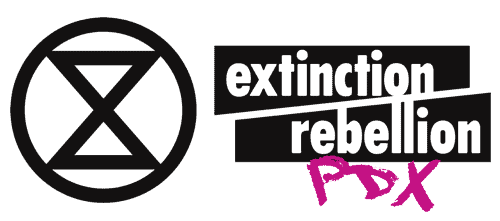Extinction Rebellion US has a Fourth Demand to create a livable just planet for all. It “demands a just transition that prioritizes the most vulnerable people and indigenous sovereignty; establishes reparations and remediation led by and for Black people, Indigenous people, people of color and poor communities for years of environmental injustice; establishes legal rights for ecosystems to thrive and regenerate in perpetuity; and repairs the effects of ongoing ecocide to prevent extinction of human and all species, in order to maintain a livable, just planet for all.”
This documentary, directed by Michel Zongo and available on vimeo.com, is just one of many stories that highlight mineral resources exploitation in the countries of the Global South, and specifically in this case in Burkina Faso, by multinational corporations. This exploitation ties in with the Fourth Demand. In the long term, mining does not benefit local populations. The corporations make promises that are not often kept, take their money and run and leave the area polluted and impoverished. Corrupt governments are often complicit in allowing them to do so. There is no question that the poorest get the shaft and that racism plays a huge role.
Through interviews with Kalsaka community members, the film highlights, using their own words, how they were taken advantage of by the mining company and government. The director spent two years earning the trust of the community members prior to the start of filming.
Kalsaka is a small community in northern Burkina Faso, a country in NW Africa. With the support of the Burkina Faso government a British mining company was giving the go-ahead to mine for gold under a sacred hill of the Kalsakan people. People’s farm land was also confiscated. The government said it was lawful to mine and the people were given no say in the matter and if they opposed they would be arrested. They were promised jobs, scholarships for their children, development aid for ten years, and schools, among other things. After extracting eighteen tons of gold from the mine and after the release of the documentary, mining ceased after just four years.
The mining of gold was done in Kalsaka using the cyanide leach method. Tiny amounts of gold are disseminated throughout the rock. Therefore much rock is required to extract enough gold to make it economical. Rock is removed, crushed and sprayed with cyanide. The cyanide dissolves the gold and the solution trickles down, gold is removed and cyanide is reused until all the gold is removed. Tailing piles and open pits, often filled with cyanide-laced ponds, are left behind.
The company left leaving Kalsaka with a destroyed sacred site, polluted and unproductive land, poisoned drinking water containing cyanide and other chemicals from the mining, and ruined workers health due to the caustic chemicals used.
The community, prior to the mining company’s exploitation, had been conducting small scale panning of the gold for years, but after the mine closed they were prevented from continuing even that enterprise, thus adding insult to injury. Although schools were built they were never equipped. After the movie was released the government did revise the mining codes. Too little, too late.
This brings us to the proposed lithium mine in Thacker Pass, Nevada near the Oregon border, and potential lithium mining in Oregon. Most lithium is imported; the US government is pushing mining of local sources. There is abundant lithium in Nevada and Oregon but large areas of land, including sacred tribal burial grounds of the local indigenous peoples, will be stripmined. Much water is used to mine the lithium and sulfuric acid is used to process it. Fort McDermott Paiute, Shoshone and Burns Paiute tribes, as well as environmental groups, are opposing the mine. To know more about the resistance and how to get involved go to https://www.protectthackerpass.org.
The conundrum! Lithium is used in batteries that power cellphones, laptops and electric vehicles. Electric vehicles are touted as one way to reduce carbon emissions. However, society needs to decide what we want: a polluted and essentially unlivable planet or a planet that is healthy and livable and respects human rights. It is essential that we need to get off the continuous growth/technology bandwagon. One solution is to reduce our consumption. Those who have their basic needs met (clean air and water, housing, food, and health) do with less; those with less are provided the basic needs.

